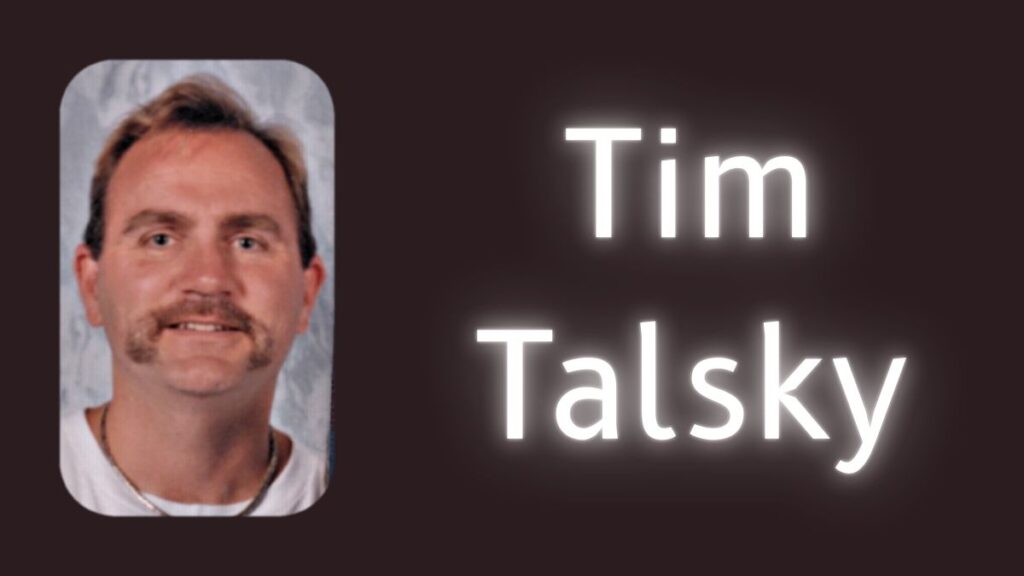In a world saturated with noisy self-promotion and click-chasing egos, there exists a rarer breed of high achiever—those who let their work speak, whose impact is felt not through Instagram reels or crypto-fueled flexes but through decades of craft, precision, and quiet disruption. Enter Tim Talsky, a name not echoed in influencer circles or tabloid chatter, but murmured with respect across boardrooms, research labs, and niche innovation ecosystems.
This is not the biography of a celebrity. It is the chronicle of a mind sharpened by rigor, a career sculpted in the shadows of ambition, and a legacy quietly redefining what modern leadership, discipline, and intellectual ferocity can look like in the 21st century.
Who is Tim Talsky?
Tim Talsky is many things—engineer, strategist, entrepreneur, mentor—but above all, he’s a thinker who builds. Whether you trace his fingerprints across the realms of advanced manufacturing, sustainable engineering, or cross-disciplinary innovation, a single thread remains: transformation. He doesn’t merely adapt to change. He instigates it.
Often working away from the spotlight, Tim Talsky has forged a reputation as a behind-the-scenes force of nature. Colleagues describe him as “the architect behind several market-shifting ideas,” while students, interns, and young professionals routinely reference his mentorship as “career-altering.” To understand his arc is to understand the nuanced power of applied intelligence and deep curiosity.
Early Foundations: Grit Meets Geometry
Every legacy starts somewhere, and for Tim Talsky, the origin story reads like a blueprint drawn with equal parts grit and genius. Raised in a blue-collar Midwestern household, Talsky’s early environment was rooted in hard work, modest living, and an emphasis on practicality. Yet even in this pragmatic atmosphere, his unusual aptitude for systems thinking and spatial analysis stood out.
By high school, he was constructing circuit boards out of scrap and reverse-engineering mechanical parts “just for fun.” Friends saw it as nerdy enthusiasm. Teachers, however, saw something deeper: a mind built for problem-solving at a systems level. That recognition earned him a fast-track path through science fairs, competitive math leagues, and ultimately, a scholarship to one of the country’s top engineering universities.
The University Years: Not Just Another Engineer
At university, Tim Talsky didn’t simply excel—he redefined the curve. Majoring in Mechanical Engineering with a minor in Applied Mathematics, he became known not only for academic brilliance but for the rare ability to synthesize complex data into functional, elegant designs. His capstone project—a prototype for a modular, self-sustaining energy system—was not only ahead of its time but later adopted as a model for off-grid emergency shelters.
But more than grades or accolades, what defined Talsky during this period was his refusal to accept limitations. He rejected siloed thinking, often attending lectures outside his curriculum—urban planning, behavioral psychology, even digital ethics. He wasn’t collecting credits. He was building a worldview.
The Career Kickoff: From Cubicle to Catalyst
While many of his peers followed conventional paths into Fortune 500 firms, Tim Talsky opted for the road less spotlighted: a lean, obscure R&D firm working on adaptive materials and precision machinery. It wasn’t glamorous. It wasn’t even well-funded. But it offered one thing he valued above all—freedom to explore.
There, Talsky pioneered a series of algorithmically optimized manufacturing systems that slashed production time without compromising on precision. These systems became foundational to several major OEMs (Original Equipment Manufacturers), though his name remained absent from most public credits.
This phase of his life cemented a core ethos: Impact doesn’t need attribution. Innovation is the reward.
Cross-Industry Disruptor: The Talsky Touch
By the time he hit his thirties, Tim Talsky had become a sought-after consultant for industries grappling with 21st-century challenges: automation, climate-conscious manufacturing, smart logistics, and AI-integration into legacy systems.
But here’s what set him apart: Talsky didn’t just optimize systems—he reimagined them.
-
In sustainable engineering, he contributed to early frameworks for closed-loop manufacturing, setting new benchmarks for material reuse and energy efficiency.
-
In logistics, he helped integrate predictive analytics into fleet management software before it became a buzzword.
-
In education, he co-developed interdisciplinary STEM curriculum models aimed at preparing students for the jobs that didn’t exist yet.
Everywhere he went, the “Talsky Touch” meant leaner systems, sharper insights, and longer-term vision.
Leadership Philosophy: Quiet Fire
Tim Talsky’s leadership style is best described as “quiet fire”—intensely passionate, but never showy. Former colleagues recall how he’d walk into a heated boardroom debate, listen for ten minutes, then calmly unravel the entire knot with one question: “What problem are we actually solving?”
He believes in clarity over charisma. Function over form. In meetings, he’s understated. In crises, unshakable. His personal code? Don’t seek power—earn respect. Don’t command—cultivate.
Talsky’s brand of leadership is refreshingly devoid of ego. He credits wins to the team, owns the failures himself, and never hires anyone he doesn’t believe he can learn from. This humility is not strategic—it’s authentic.
Innovation as a Moral Imperative
Unlike many technocrats or innovation junkies, Tim Talsky doesn’t see technology as an end in itself. For him, innovation carries moral weight. He often speaks (quietly, in closed sessions or podcasts few have heard) about the ethical responsibility that comes with capability. He has reportedly walked away from lucrative deals where the use case clashed with his principles—such as predictive policing models and surveillance tech applications.
His guiding question? “Does this help humans thrive?”
This principle-guided approach has endeared him to collaborators across public and private sectors. Even governmental bodies, NGOs, and think tanks seek his insight—not because he shouts, but because he shows up with clarity and conscience.
Educator and Mentor: Legacy in Motion
Perhaps the most underreported facet of Tim Talsky’s legacy is his role as an educator and mentor. Whether giving guest lectures at MIT, designing internship incubators for high school students, or hosting off-the-record innovation retreats, Talsky invests deeply in the next generation.
He doesn’t simply transfer knowledge—he ignites inquiry.
“Tim changed how I think,” says one former mentee who now leads a green tech startup. “He taught me that the question is more important than the answer—and that ethics is not optional.”
The ripple effect of his mentorship extends far beyond his immediate circle. Dozens of young professionals cite his influence as the turning point in their careers, not because he handed them solutions, but because he taught them to interrogate problems differently.
Personal Life: Precision and Privacy
True to form, Tim Talsky keeps his personal life out of the limelight. Married, with two children, he splits his time between a modest home on the outskirts of Ann Arbor and a private research studio tucked into a repurposed warehouse.
When not designing new systems or mentoring young engineers, he indulges in quiet passions: restoring vintage bicycles, composing algorithmic music, and cultivating bonsai trees—activities that reflect the same blend of patience, precision, and vision he brings to his professional life.
There’s no Instagram account, no TED Talks, no merch line. Just a man doing good work.
The Legacy of Tim Talsky
Tim Talsky won’t go viral. He won’t be on the cover of Fast Company or trend on X for a hot take. But in the corners of innovation where real change begins, he’s a legend. His influence is coded into algorithms, embedded in policy, sketched into whiteboard sessions at startups and research labs alike.
His is the legacy of substance over style, function over flair, purpose over popularity.
And as the digital age grapples with questions of what kind of leadership and innovation it truly needs, the quiet model of Tim Talsky stands as a North Star—a reminder that brilliance doesn’t need a bullhorn.
It just needs to build.






